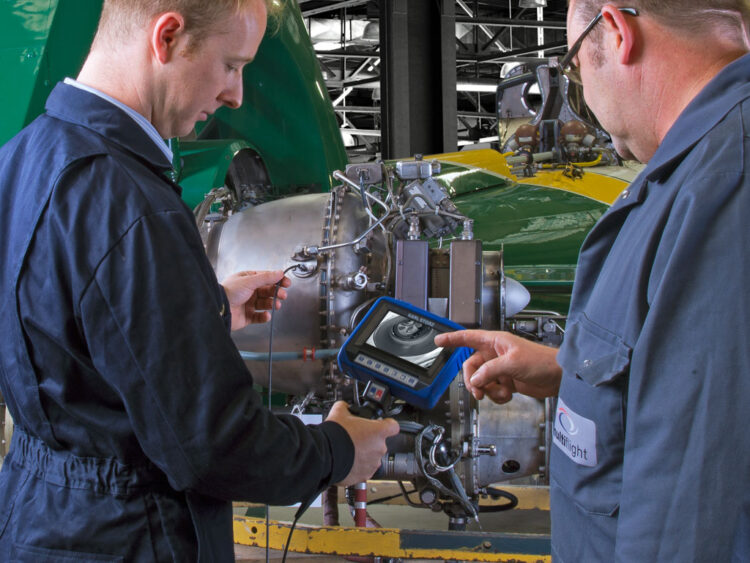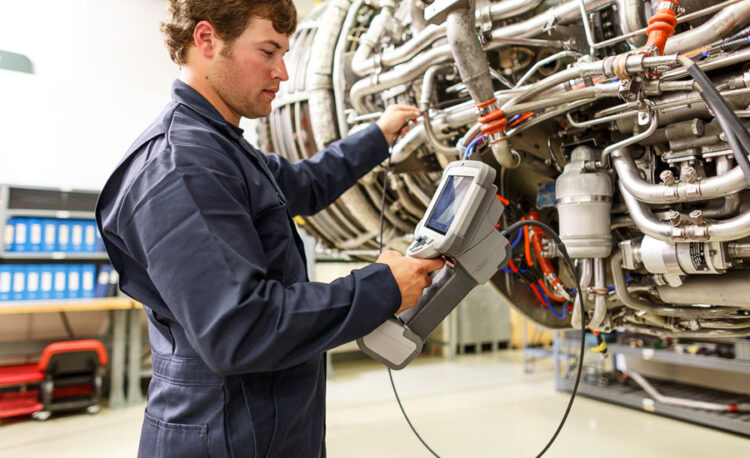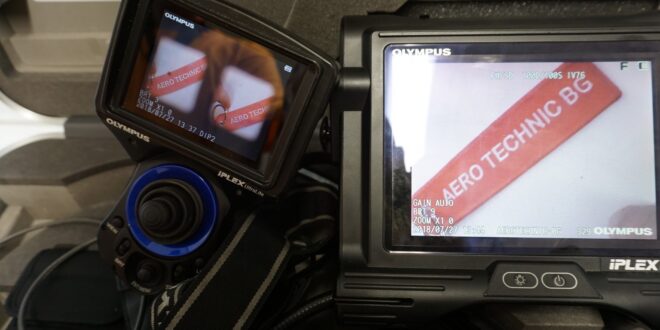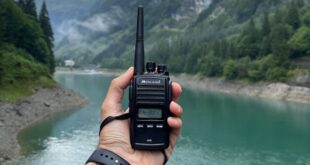In 1955, the first turbojet-powered aircraft was introduced. Since then aircraft manufacturers have made tremendous technological improvements. The reliability and performance found in the jets today were unimaginable in the past. For example, in 1965 the engines had 800 hours of TBO, which has exceeded 3,000 hours.
Along with the improvement in the aircraft engines, the tools, and techniques to check and repair the engines have also evolved. The borescope is one of them, which has undergone an evolution. Boroscopes get categorized into three varieties.
- Standard rigid borescopes – It is a solid tube with different lenses. Perfect for straight-line access within a specific part of the engine or airframe. You get exceptional optical clarity with a rigid borescope.
- Flexible fiberscopes – Fiber optic material allows light transmission to inspect the surrounding. Fiber optic material collects images and transmits them to the optical eyepiece. The device can easily bend across turn and move deep within the engine.
- Multi-functional videoscopes – It is the latest addition in RVI or remote visual inspection technology. Unlike fiberscope, videoscope uses a tiny camera attached at the end instead of fiber optic strands. The video camera provides HD images, recording the feedback, and storing it.
Borescope means to get a view of things within the engine that can’t be possible without a mirror and flashlight. Each one is suitable for a specific inspection type. On the manufacturing side, fiberscope is used for internal parts inspection, especially when the technician has to gain access via small openings. On the maintenance and repair side, a videoscope is the best. They deliver a high-quality image as well as a video for later review and documentation. Technicians can perform the job much better.
Aircraft turbines are subjected to ingest FOD or foreign object damage, erosion, corrosion, cracking, distortion, and thermal deterioration. The parts are extremely vulnerable and hardly accessible for visual inspection. Borescopes, fiberscopes, and videoscopes are a great way to get familiar with the turbine condition. Regular turbine borescope inspections maintain aircraft turbine reliability and safety. It doesn’t matter if you desire a 3mm or 8mm borescopes for your aircraft turbine inspection. Give the experienced USA Borescopes supplier a call!
Videoscope choice is crucial for proper aircraft engine inspection. The areas that the borescope will be used to inspect are –
- Compressor– Access is possible via air inlet or a specially designed bleed port or igniter port. The trailing and leading compressor blade edges along with guide vanes are inspected for erosion and FOD.
- Combustion chamber –Access is via an igniter port. Burner cans are inspected for misalignment and cracks. Fuel nozzles, louvers, and other parts are reviewed for excessive distortion, cracking, and coking.
- Turbine section– Access is via bleed or igniter port. The first section of the turbine experience high heat levels. The guide vanes and stationary nozzles are at risk of cracking and burning, erosion, pitting, sulfidation, and FOD. The second section blades are at a risk for rivet cracking and shifting.
The device offers crucial information from areas that cannot be reached and need disassembling. Taking out the parts for inspection and then assembling those takes a lot of time and effort. With great videoscope technicians conclude the inspection quickly and accurately. The videos allow them to take a second opinion with the team. It is a great way to share inspection feedback with your team.
How to choose a reliable video scope for aircraft turbine inspection?

Product quality
Borescopes vary in terms of performance and quality. Ensure to choose a brand offering core features necessary for professional turbine engine inspection.
DOV [Direction of View]
The view angle defines the capability of the boroscope for inspecting the longitude line across the tube. A rigid borescope has 0° DOV. Fiberscope and video scope offer 90° DOV. It makes narrow cavities inspection easier. The technicians get to inspect with great detail in comparison to a rigid boroscope with 0° DOV.
FOV [Field of View]
You can imagine FOV as a cone, which extends beyond the tips of the tube. FOV of 30° empowers to make narrowly focused images. A borescope with 120° FOV offers wider, but less magnified images. The distance of the area from the tip of the tube will determine the FOV degree. Less distance to cover means you need a video scope with higher FOV and vice versa.
Probe dimension

You will need probes with a small diameter to gain access to the turbine’s gearboxes. The probe has to fit within the turbine engine’s inspection hole. The length of the probe also needs to be factored. The length has to be adequate for completing engine inspection.
Portability
Videoscope portability is crucial, as it will get carried at different locations. Even consider the battery charge duration. Does the video scope come with an extra rechargeable battery? These considerations are crucial for the aircraft maintenance crew. It helps them do the inspection and repair tasks efficiently.
The above are some major factors to consider when you buy a videoscope for aircraft turbine maintenance. There are a couple of advanced features that can empower aerospace inspectors with their measurement results. These features can bring more reliability and precision to aircraft turbine inspections.
Stereo Measurement – When paired with the correct optics, stereo measurement allows the technicians to quantify the flaws in 3D space. It even delivers 4 times a large FOV with extended depth than the conventional models. The inspectors can benefit in the following way –
- Defects can be seen and measured from far away with expanded FOV.
- The optimized image and optics sensor helps to choose the precise measurement point.
- Inspection gets completed faster as you get the most reliable outcomes during the first inspection itself.
3D Modeling – Even with state-of-art stereo management capabilities, precise, and accurate measurements, you need to rely on setting the reference and measurement points. These parameters are hard to set in complex scenarios, irregular surfaces, and poor lighting conditions. 3D modeling feature allows visualizing the shape of the critical component with ease.
- With various 3D views, you get to understand the depressions and protrusions.
- You can easily slice unnecessary sections from 3D for concentrating on the critical parts.
The videoscope technology has made the aircraft turbine engine maintenance easy. It ensures the safety and reliability of aircraft performance.
 Hi Boox Popular Magazine 2024
Hi Boox Popular Magazine 2024



